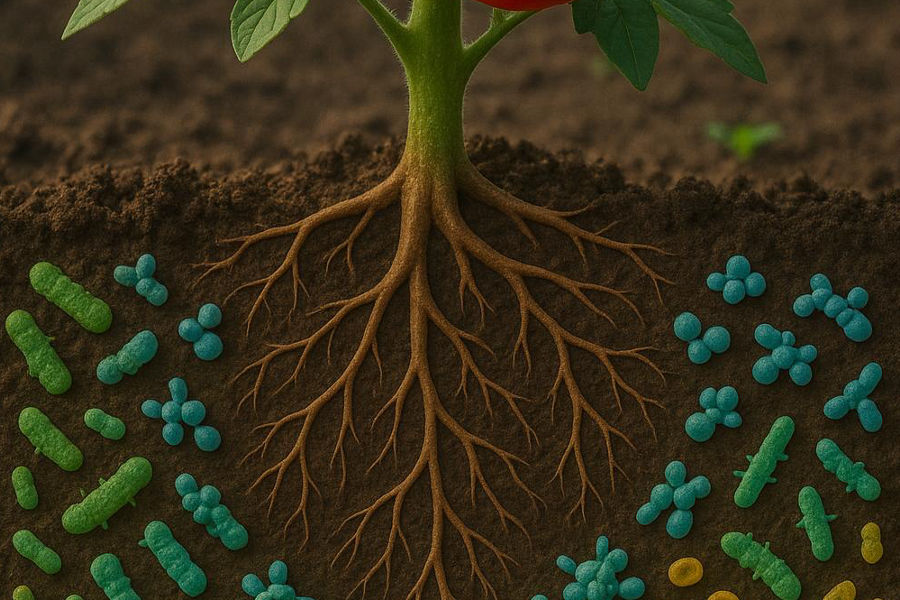The Rhizosphere: Where Healthy Roots Begin
When it comes to growing healthy and high-yielding crops, most farmers focus on what’s above the ground — but the real magic happens beneath the surface. Welcome to the rhizosphere, the hidden zone around plant roots that plays a major role in plant health, soil fertility, and crop productivity.
What is the Rhizosphere?
The rhizosphere is the thin layer of soil surrounding plant roots. This zone is rich in biological activity. Here, roots release organic compounds like sugars, amino acids, and enzymes into the soil. These root exudates attract and feed beneficial microorganisms such as bacteria, fungi, and actinomycetes.
Why the Rhizosphere is Important for Farmers
In the rhizosphere:
-
Microbes convert unavailable nutrients into forms plants can absorb
-
Beneficial fungi improve root uptake of water and minerals
-
Microbial activity boosts soil structure, aeration, and water retention
-
Certain bacteria protect plants from soil-borne diseases naturally
A healthy rhizosphere means stronger roots, faster growth, and better yields — all without extra chemical inputs.
How to Improve Rhizosphere Health
-
Use organic soil conditioners or biofertilizers that boost microbial life
-
Avoid overuse of chemical fertilizers and pesticides that harm soil microbes
-
Apply compost, seaweed extract, and fulvic acid to feed root-zone organisms
-
Maintain proper soil moisture and pH for microbial balance
